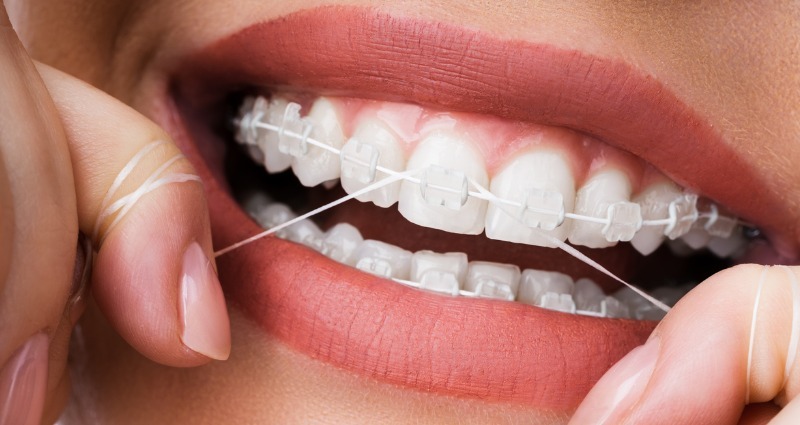How To Floss With Braces

Flossing in general can sometimes feel like a tedious and tricky task. The addition of braces can present its own set of new challenges and limitations. Braces can trap food particles into places that are hard to see and reach. This is why flossing is so important for oral hygiene. Generally speaking, it is important to floss your teeth EVERY night, especially while wearing braces. Getting into a solid routine early on will only make this healthy habit easier for you down the road.
Finding a flossing routine that works well for you is an important step when learning how to floss with braces. We would recommend following these instructions when flossing:
- Using a piece of floss ~18 inches long, slide the floss under the wire and above the space between two teeth.
- Insert the floss about halfway through and then hold both ends of the floss.
- Slide the floss up and down a few times between the teeth. You can typically tell that the spot you were focusing on is clean when you hear a slight squeaking sound.
- Next is the gums. Floss the gum line in the shape of a “C”, and below the gum line with a soft up and down motion.
- TIP: Be careful not to apply too much pressure when flossing around the archwire (the thin metal wire connecting brackets).
- Remove the floss carefully, threading under the next wire, and repeat steps above.
This process can take around 20 minutes to complete while you are still getting the hang of things. If you would like to “speed up” or enhance the dental hygiene process with braces, you can look into products such as threader floss, electronic toothbrushes, an orthopick and more.
Take Care of Your Smile at Frey Orthodontics
Keep your braces looking their best with Frey Orthodontics. Oral hygiene with braces can present a set of challenges you may have never dealt with before. There will certainly be an adjustment period, but using our tips and tricks will help you get the best practices down in no time. Contact us if you have any questions on specific orthodontic treatments and if they are right for you.
